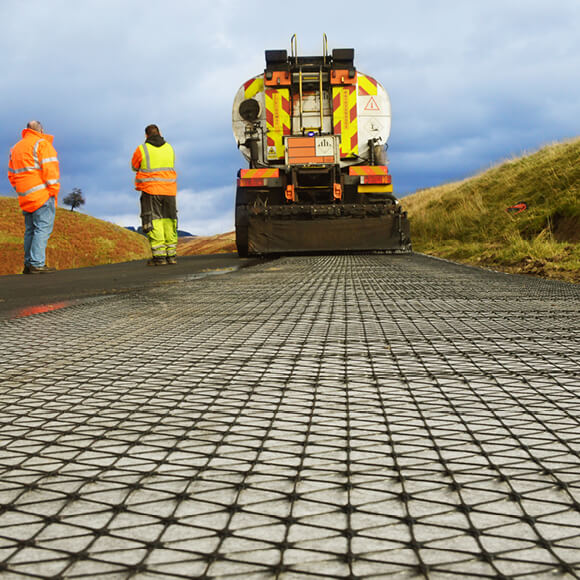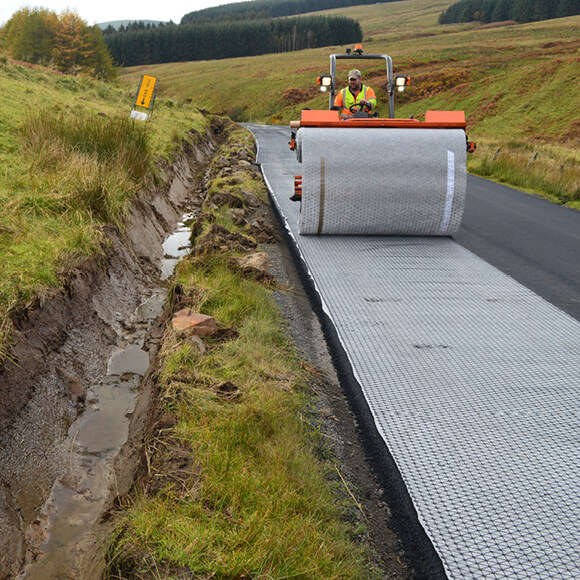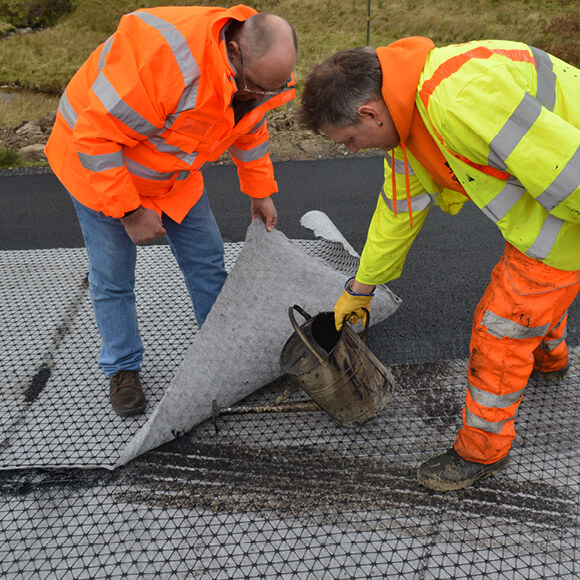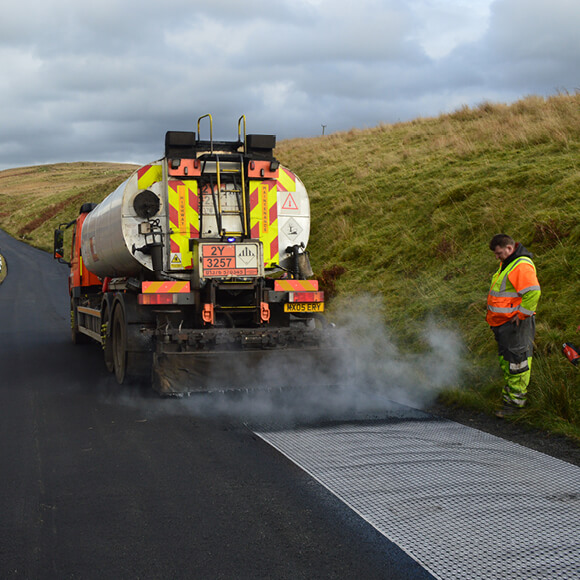
Tensar® AX5-GN
- Tensar has over 30 years of experience with asphalt interlayers
- Tensar AX5-GN high-profile 3D interlayer delivers three functions of reinforcement (load transfer), stress relief and interlayer barrier (waterproofing)
- Controls fatigue cracking in asphalt to extend pavement life
- Optimum control of reflective cracking in asphalt overlays
Need our support with your project?
From planning and design to installation and on-site consulting, Tensar is ready to jump in and partner with you.
Tensar AX5-GN is Tensar’s most advanced high performing asphalt interlayer product. The product is a composite, comprising a stiff high-profile 3D triaxial grid thermally-bonded to a non-woven paving fabric. This provides the triple interlayer functions of reinforcement, stress absorption (SAMI) and interlayer barrier (waterproofing), once saturated with bitumen during installation. Tensar AX5-GN is a proven solution for reinforcing asphalt overlays to enhance fatigue performance, e.g. increasing the life of reconstructed pavements or reducing asphalt layer thickness in new pavements.
It has also been designed to provide optimal performance for control of reflective cracking in asphalt overlays, and longitudinal cracking in road widening. The paving fabric component, after saturation with bitumen during installation, provides a stress absorbing membrane effect (SAMI) by enabling lateral strain distribution between the cracked layer and the overlay. This, together with the asphalt reinforcement effect of the grid, provides optimum crack control.
Typically installed under the asphalt binder course or the asphalt base course layers, the Tensar AX5-GN interlayer’s high-profile multi-axial grid mechanically interlocks with the aggregate particles in the asphalt mix to provide reinforcement-restricting lateral strains within the asphalt matrix. The multi-axial grid structure provides crack control in all directions.
The reinforced layer created prolongs service life, by offering incredible resistance to reflective cracking and mitigating longitudinal cracking caused by differential settlement between new and existing lanes on widened roads. It can also reduce surface rutting, particularly in low stiffness asphalt mixes subjected to slow and heavy wheel loading at high temperatures.






